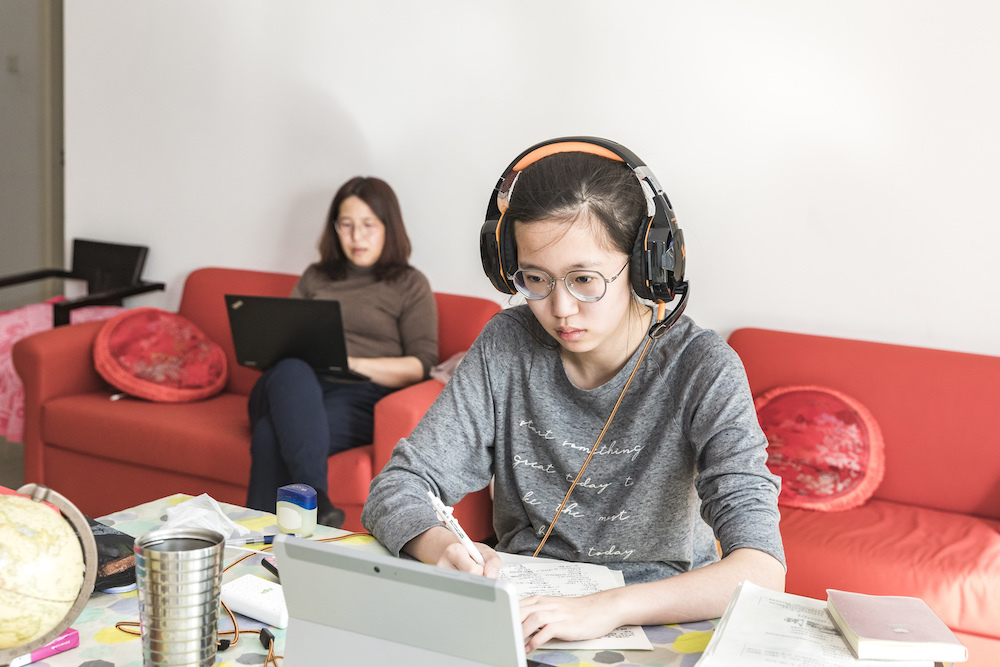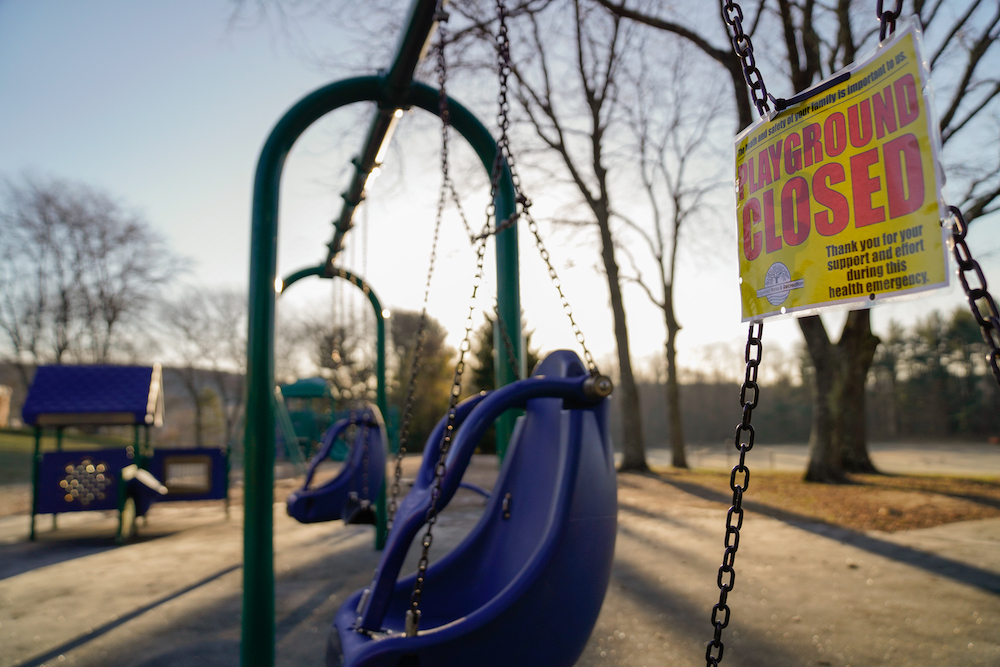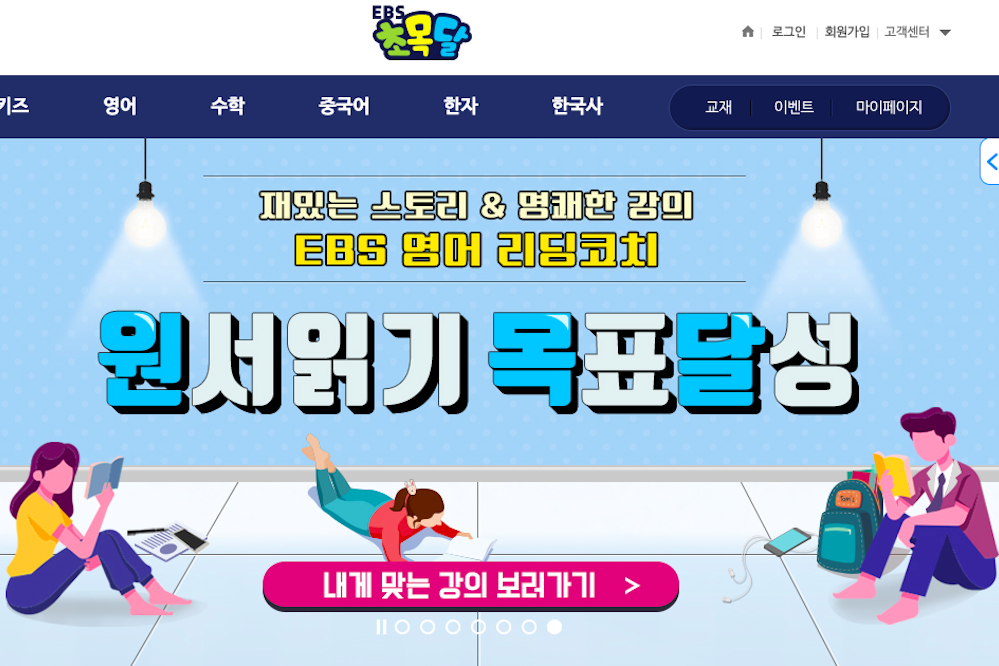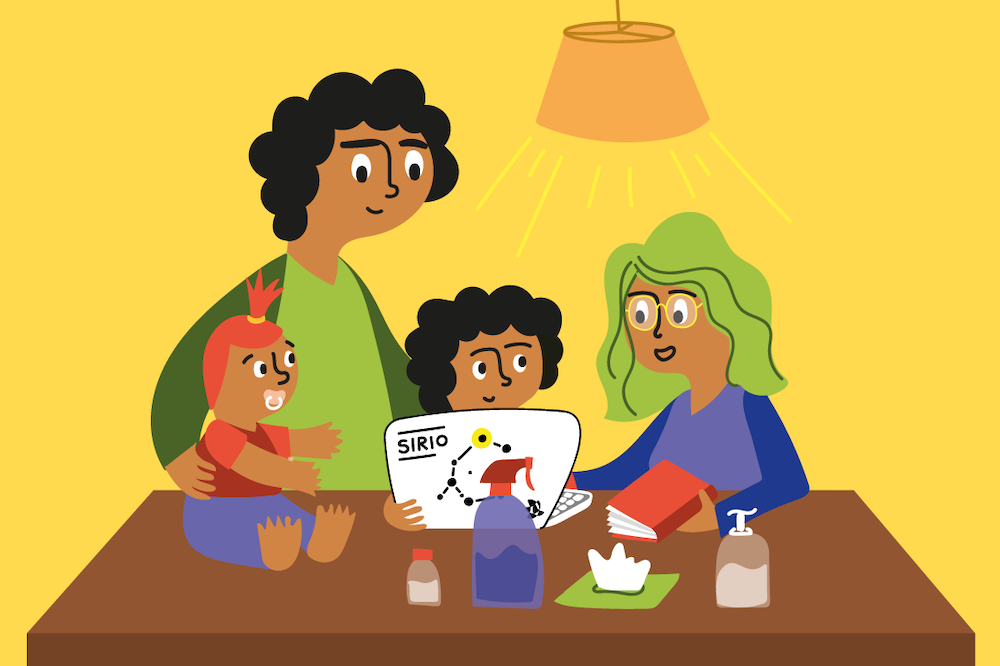
Hundreds of millions of students now learning from home after coronavirus crisis shuts their schools

Education in emergencies, Technology and education
Lessons delivered online and by television are quickly becoming the norm for children in countries around the world.
NOTE: The statistics here were updated on March 20.
In Senegal, Ibrahima Diongue sits in his living room, watching a flickering TV screen. In China, Xiaoyu sits at a table, watched by her mother.
Both are “at school” – taking lessons remotely because the coronavirus outbreak has shut down classrooms around the world.
The pandemic has forced the closure of the entire preschool, school and university systems in 124 countries, with partial closures in others. These shutdowns have impacted more than 1.25 BILLION children and youth and could last for months – so governments are moving quickly to provide alternative methods of learning.
These range from hi-tech solutions like real-time video classes conducted remotely to lower-tech options such as educational programming on radio and television.
Continued learning is crucial. As well as the loss of education, experience of prolonged crises shows that vulnerable children who are out of school in some countries are at risk of child labour, early marriage, recruitment by armed groups, exploitation and discrimination.
Theirworld has been campaigning for years for every child in the world to receive a quality education. We led calls for Education Cannot Wait – the world’s first fund to deliver education in emergencies – to be set up in 2016.
A sense of normality and keeping children learning in a secure home environment are key. A child who is out of school for more than a year is unlikely to return – and girls are 2.5 times more likely to drop out of school than boys.
Theirworld President Justin van Fleet said: “High-tech and low-tech innovations, ranging from radio learning, games and distance learning, have been implemented in crises past and present. Governments should ensure that all young people have the continuity of an education as the consequences of a lost year of development and learning is far too high.”

A playground at an American elementary school in Ridgefield, Connecticut, sits empty following school closures (UNICEF / McIlwaine)
Senegal is one of the countries that have shut down their education systems nationwide, affecting almost 3.5 million students. A TV channel has launched daily lessons to prevent children falling behind with their studies and to educate them about coronavirus.
“It’s a contagious disease, it is lethal, it is serious,” said Diongue, his lap piled with textbooks and notes he had jotted down during the programme.
Many households in Senegal do not have internet access but most have TV sets. Diongue’s father Cheikhe – head teacher of a school in Dakar – said: “Television is a good medium to help, to reinforce, to support the children.”
In China, where 330 million students are shut out of schools and higher education, a digital learning platform has been launched by the education and information technology ministries. Those with limited internet access can learn via television.
Xiaoyu, an 11th grader in Beijing, told UNICEF she takes six online classes a day, as well as regular breaks and exercises. But she said: “At school, I can approach teachers at any time if I have questions and I can also discuss with my classmates. I miss my friends. I just want to go back to school.”
That’s a view shared by 14-year-old Italian student Lavinia Tomassini from Milan, who is studying at home. She said: “I focus more when I am at school as I have less distraction. I hope all this will come to an end.”
The last time a large-scale cross-border health crisis affected education was the Ebola outbreak of 2014-16, when almost five million children were forced out of school in Guinea, Liberia and Sierra Leone.

In the first year of the crisis, the Global Business Coalition for Education (GBC-Education), in partnership with Theirworld’s A World at School initiative, released a major report on the consequences of school shutdowns and recommendations for immediate action.
It called for education funding to be prioritised in the Ebola response and for governments, business, donors and other stakeholders to work together to achieve:
- Emergency provision of education
- Safe reopening of schools
- Sustaining healthy communities
Without urgent action, the report warned, millions of the most vulnerable and marginalised children would be trapped in a worsening cycle of poverty that would devastate their communities. The same recommendations are relevant today.
In 2018, GBC-Education launched the REACT (Rapid Education Action) initiative to use the know-how and resources of the business community to support partners on the frontlines working to restore education in countries affected by conflicts and disasters.
“REACT digital platform was built to create ways for the business community to provide timely support for educational disruptions in times of crisis like this,” said Jake Taesang Cho, Senior Manager, Strategic Partnerships at GBC-Education.
“We are currently utilising the REACT platform to create a registry of businesses that are offering critical resources and services to help restore disruptions to education caused by the spread of COVID-19.”
UNESCO is the United Nations agency that leads on the Sustainable Development Goal to deliver quality education for all. So it is compiling relevant statistics and providing urgent support to ensure learning continues after schools are shut.
.@WHO joins China, France, Italy, Republic of Korea and Rwanda on 1st @UNESCO #Covid19 webinar: all countries using mix of digital platforms, TV and radio to leave no one behind & support teachers.
Let's make sure #LearningNeverStops!https://t.co/oIfJpZ99UF #ShareEducation pic.twitter.com/axtNCEDlYW
— UNESCO ?️ #Education #Sciences #Culture ??? (@UNESCO) March 21, 2020
The UNESCO-Covid-19 Emergency Task Force has been launched to support national responses and share digital and traditional methods of learning, with a focus on the most vulnerable countries. The agency’s Director-General Audrey Azoulay said: “We are stepping up on our global response by creating a coalition to ensure a fast and coordinated response.
“Beyond meeting immediate needs, this effort is an opportunity to rethink education, scale-up distance learning and make education systems more resilient, open and innovative.”
UNESCO has curated a list of educational applications and platforms to help parents, teachers, schools and school systems provide learning. Most are free and several support multiple languages.
Many existing E-learning platforms have made their programmes free or available at a discounted price for schools and teachers around the world. Some have also partnered with organisations like UNICEF.
In Turkey, the education ministry will launch a free, remote school system on Monday with a TV and internet-based curriculum on a national scale. Some online resources and applications are already available on its website.
“There are not just lessons. There are games, activities, guidance,” said Education Minister Ziya Selçuk, as he announced the launch. More than 100 teachers voluntarily supported the project, which was filmed at studios in Istanbul and Ankara.

In Uruguay, Plan Ceibal has made its platforms available for teachers and students, accessible from any device so they can be used for learning at home
Selçuk also said: “We have virtual classrooms for our children in the exam year, where they can meet interactively with their teachers in the same class.”
Here’s what some other countries are doing to ensure children are still learning while at home:
- FRANCE: “Ma classe à la maison” (my class at home) allows students to continue their education and maintain contact with their teachers, who can organise virtual classes. It is made up of courses, activities, videos and summaries in four-week work cycles. The virtual classroom system is accessible through smartphones and computers.
- IRAN: The education ministry has arranged for all classes for primary and secondary students to be provided on television.
- SOUTH KOREA: The Educational Broadcasting System provides advanced educational service by offering various multimedia content.
- ARGENTINA: Seguimos Educano provides video lessons by subject for primary and secondary levels, along with materials for teachers to prepare them for online teaching.
- LEBANON: The MEHE app is the official learning application of the Ministry of Education and Higher Education. It provides information for teachers and education personnel.
- BRAZIL: Banco Internacional de Objetos Educacionais is a government initiative that covers open educational content from preschool to university education.
- PANAMA: Educapanama provides online courses from the Ministry of Education for pre-primary, primary and secondary school students.
Finally, Japan is already looking ahead to the day when it reopens its schools. Today Prime Minster Shinzo Abe issued instructions at a coronavirus task force meeting come up with a plan to reopen schools when the new academic year is due to start in April.
More news

